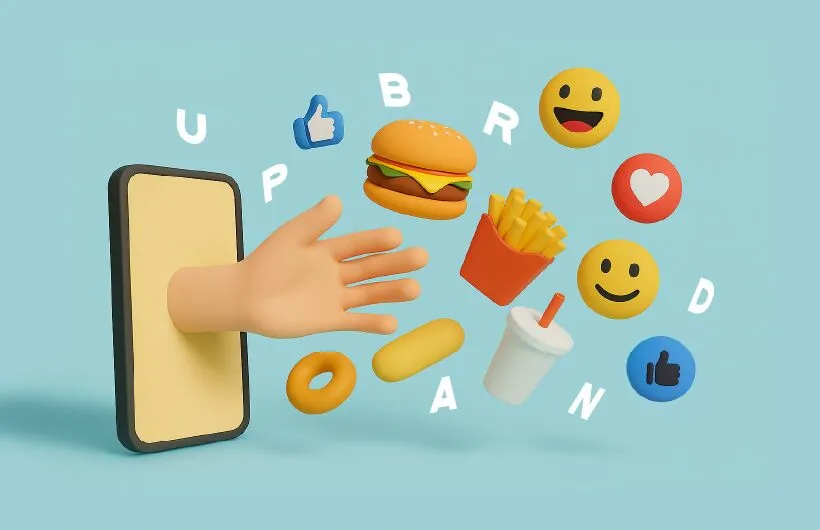
The Secret Sauce to Advertising Your QSR Business
How to craft a winning marketing strategy for your quick-service restaurant
Did you know that 50% of restaurant-goers claim that social media and advertising influence their restaurant choices, according to a recent study? Yep. That means half of your potential customers are making dining decisions based on what they see online. What does this mean for your QSR restaurant and how does this impact your advertising?
In the fast-paced QSR industry, having a strategic marketing plan isn’t just important – it’s absolutely necessary to stay in the game. With so many options available to consumers, standing out requires more than just great food. You need the right messaging, right platforms, and perfect timing to capture attention and get customers through your doors.
But what exactly does a winning QSR marketing strategy entail? How can you make sure you’re using the best marketing channels to attract diners to your establishment? It can be confusing, but no worries, we’ve got you covered. At UPBrand, we live for this stuff! Check out some of the key components of a winning QSR marketing strategy below and start driving customers to your QSR business.
Who’s Hungry? Knowing Your Audience
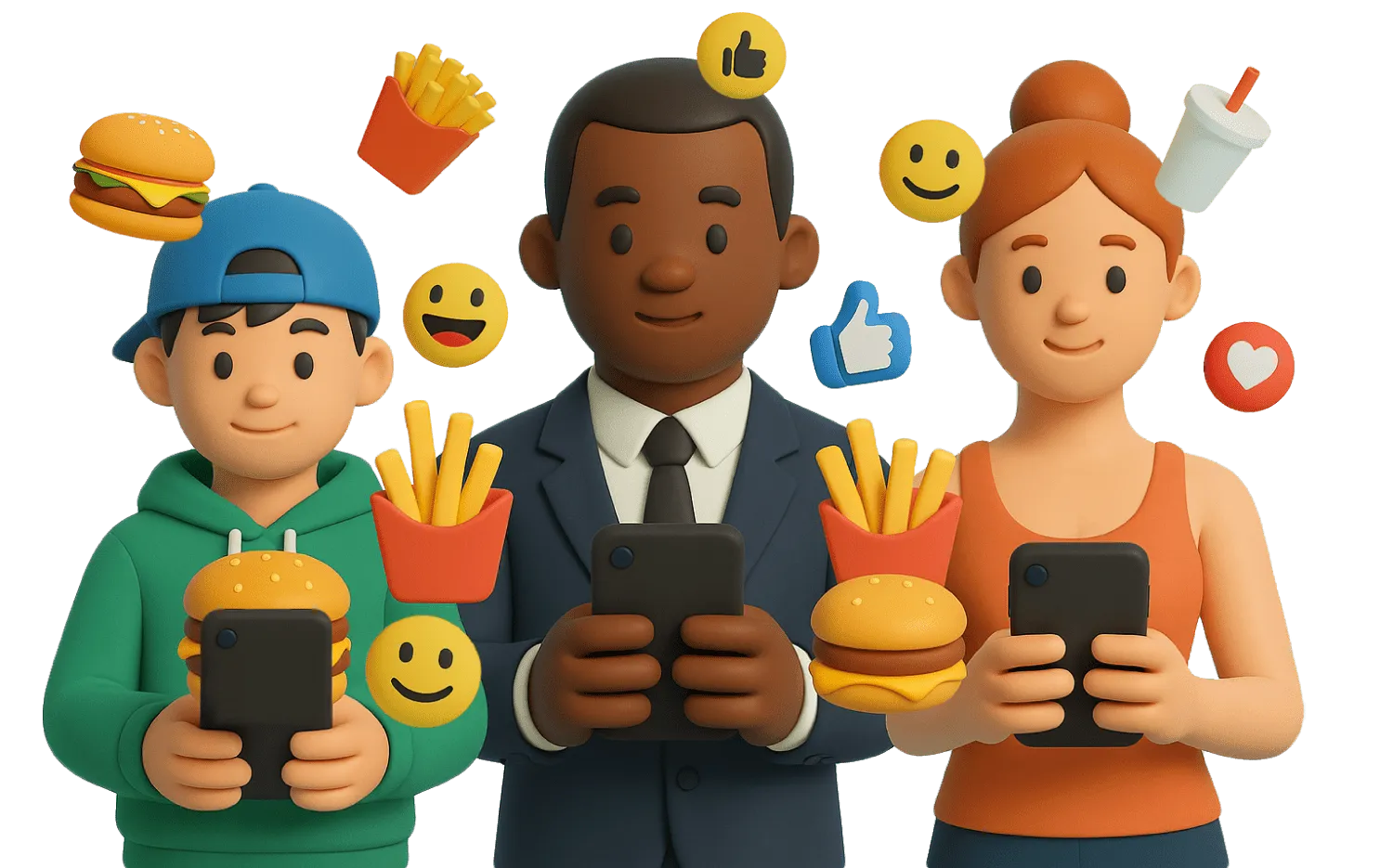
Knowing who you’re trying to sell to is a critical aspect of marketing for any business. You need to identify your core customers so you can speak to them in a way they understand. Does your QSR business attract families? Are late-night snackers more common at your restaurant? Do busy professionals frequent your locations more than anyone else? Understanding your audience and speaking their language is a game-changer when it comes to mastering your marketing strategy. To know what language to use, you first need to figure out who you're talking to.
Leveraging customer-driven insights is the first step in figuring out a killer QSR marketing strategy. By understanding your customers' demographics, habits, and preferences, you can make informed advertising decisions that resonate with them. Knowing who they are, how often they visit, and what they order helps tailor your messaging and promotions. Analyzing habits, like peak dining times or popular items, lets you optimize offers, while understanding preferences can make your marketing feel personal and relevant. Using data to guide your strategy helps you get more personal with your marketing.
Take a look at Taco Bell, for example. Back in 2012, they wanted to reposition themselves to align with their key demographics: Millennials and Gen Z. Once they understood their core audience, they knew how to better speak their language. Enter the “Live Más” campaign. This campaign emphasized living life to the fullest and resonated with Millennial and Gen Z consumers. This strategic shift resulted in a 13% increase in same-store sales, far surpassing the initial target of 4%, and reinforced Taco Bell's cultural relevance among its young target audience (FirstTheTrousers.Com).
QSR Branding That Goes Beyond a Logo
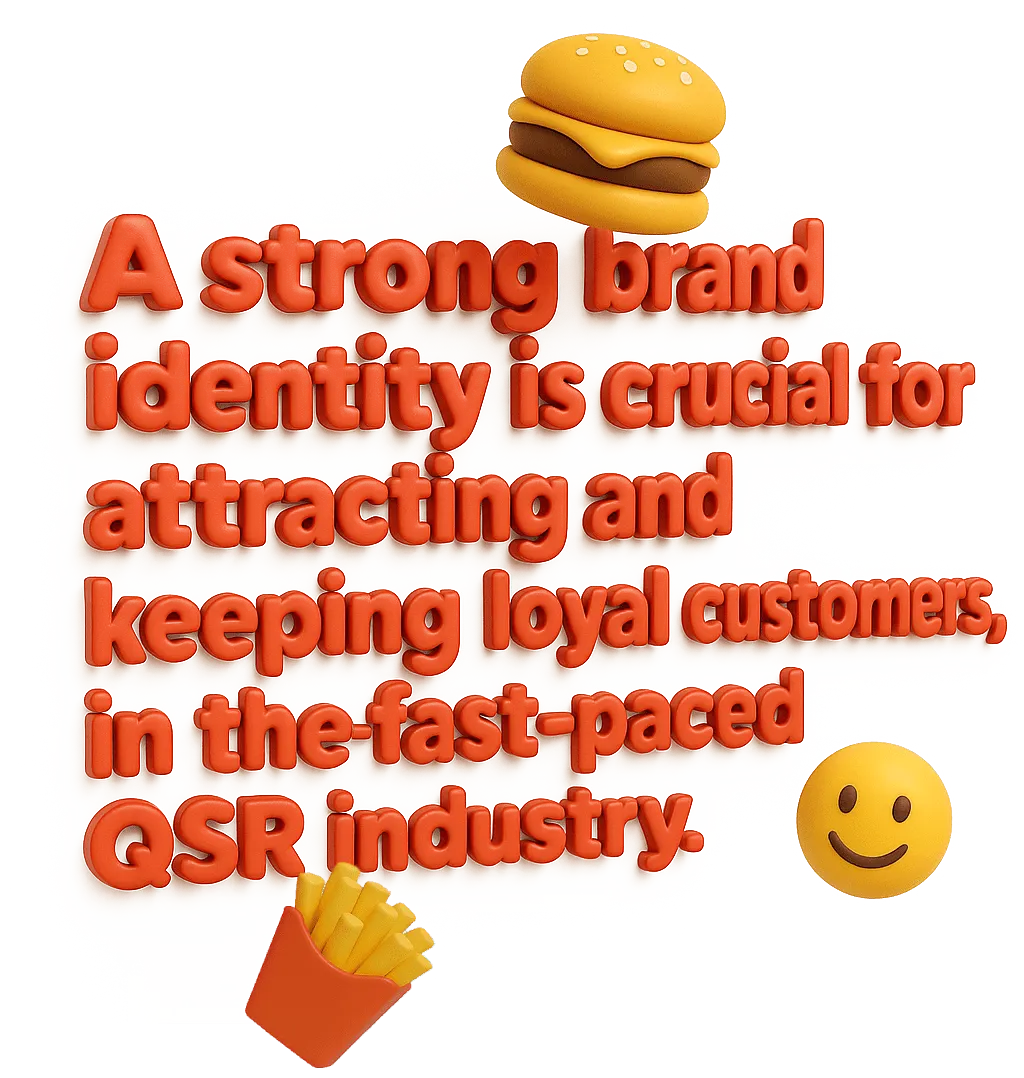 A lot of people hear 'branding' and immediately think of a logo. And while a logo is an important part of a brand’s identity, branding is way more than that. A brand is a promise. Every interaction someone has with your brand is an opportunity for that promise to be kept or broken. When you break a promise, customers are, at best, confused and, at worst, disengaged. But when you keep those promises? You drive loyalty– maybe even insistence. A strong brand identity is crucial for attracting and keeping loyal customers, especially in the fast-paced QSR industry. Brand consistency is critical to drive recognition–building trust, strengthening loyalty, and setting your QSR apart from the competition. This brand consistency is built and maintained through your visual identity, messaging, and how you tell your brand’s story.
A lot of people hear 'branding' and immediately think of a logo. And while a logo is an important part of a brand’s identity, branding is way more than that. A brand is a promise. Every interaction someone has with your brand is an opportunity for that promise to be kept or broken. When you break a promise, customers are, at best, confused and, at worst, disengaged. But when you keep those promises? You drive loyalty– maybe even insistence. A strong brand identity is crucial for attracting and keeping loyal customers, especially in the fast-paced QSR industry. Brand consistency is critical to drive recognition–building trust, strengthening loyalty, and setting your QSR apart from the competition. This brand consistency is built and maintained through your visual identity, messaging, and how you tell your brand’s story.
Your visual identity, messaging, and storytelling work together to shape how people perceive and connect with your QSR business. Cohesive visuals–like colors, fonts, and packaging–reinforce brand recognition, while a clear, authentic voice helps communicate your values and brand personality. Storytelling brings it all to life, turning your brand into something customers can relate to and remember. When all of these elements align, they create a powerful, lasting impression that keeps customers coming back for more.
It’s important to note brand consistency doesn’t have to be boring. As long as you’re keeping your promise to your audience within a consistent and cohesive framework, your creative approach can evolve and shift based on a specific goal or need.
For an example of this, let’s look at Wendy’s, a brand that has set the standard for QSR businesses. Wendy’s is a simple burger QSR but a bold, unmistakable personality has brought them forward as a major competitor in the industry. Known for its snarky, quick-witted social media presence, Wendy’s has turned engagement into an art form. By roasting competitors, playfully interacting with customers, and jumping on trending topics, the brand has cultivated a loyal following that extends far beyond its menu. They’ve taken their brand and turned it into an identity that people connect to emotionally. Their QSR marketing strategy has led to viral campaigns, increased brand awareness, and a surge in customer engagement, proving that a strong, consistent personality can make a QSR brand stand out in a crowded market.
Digital Domination in QSR Marketing: Winning Online
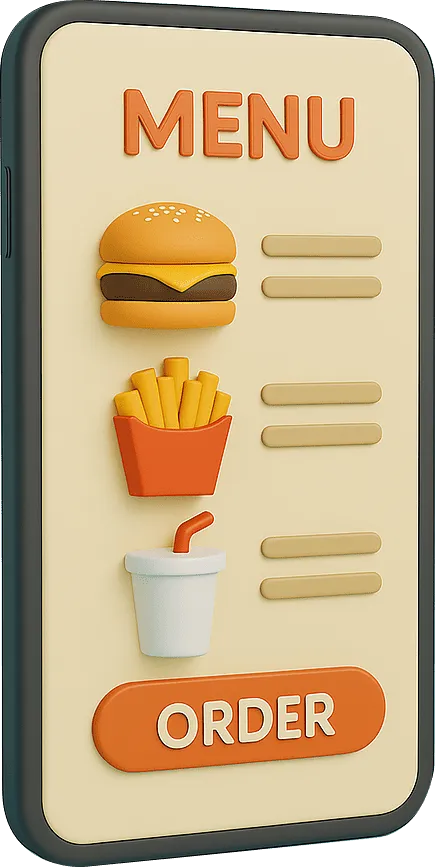 With a large majority of customers engaging with brands online, searching for nearby restaurants, and placing orders via mobile, a strong digital presence is essential. To stand out, QSRs must frequently use social media, optimize mobile-friendly ads, and rise to the top of local search results. Social media allows QSR brands to connect with their audience, build brand loyalty, and drive conversation. Finding the right voice, whether it’s humorous, community-driven, or something else, helps brands stand out. Influencer partnerships can further extend reach and boost authenticity, something customers appreciate in the world of constant brand noise.
With a large majority of customers engaging with brands online, searching for nearby restaurants, and placing orders via mobile, a strong digital presence is essential. To stand out, QSRs must frequently use social media, optimize mobile-friendly ads, and rise to the top of local search results. Social media allows QSR brands to connect with their audience, build brand loyalty, and drive conversation. Finding the right voice, whether it’s humorous, community-driven, or something else, helps brands stand out. Influencer partnerships can further extend reach and boost authenticity, something customers appreciate in the world of constant brand noise.
Optimizing mobile-friendly ads is another key to digital success. Since some QSR customers browse menus and place orders via mobile, ads must be designed for small screens. Brands need bold visuals and strong CTA’s to make it easy for customers to take action. Social media platforms like Instagram and TikTok prioritize mobile-first experiences, making them ideal for running promotions and engaging with audiences in real time.
Digital advertising offers QSR brands a unique and powerful advantage by allowing precise targeting based on demographics, location, and even time of day. Unlike traditional advertising, digital campaigns can be optimized in real time and reach the right audience at the exact right moment. Cool, right? We’ve helped this play out when QSR brands strategically push late-night digital ads to promote extended hours and late-night meal deals. By aligning ad timing with customer behavior, QSRs can drive more traffic during key hours and see a noticeable boost in late-night orders, ultimately increasing sales.
Local SEO is the final piece of the digital puzzle when it comes to online QSR marketing. When a potential customer searches for “fast food near me,” you want to be the first result. Keeping your Google Business Profile updated and using location-based keywords helps ensure that your QSR ranks at the top. A strong local SEO strategy means more customers walking through your doors and, in turn, you guessed it, a higher sales volume.
Chipotle, for example, has leveraged TikTok to drive massive engagement and real-world sales with campaigns like #GuacDance. Their #GuacDance campaign generated over 250,000 video submissions and helped boost avocado usage by 68% in just one week. This proves that when QSR brands embrace digital marketing strategically, they can turn online engagement into serious real-world results.
Feeding Customer Retention: Promotion & Loyalty
Promotions and loyalty programs are both powerful tools when it comes to QSR marketing and customer retention. Limited-time offers (LTOs) and seasonal promotions create a sense of urgency that motivates customers to take action. Why? Enter FOMO and people’s fear of missing out. Time-sensitive deals tap into the psychology of scarcity, encouraging customers to act quickly before the opportunity disappears. This approach works particularly well in the fast-food industry, where customers are looking for quick, new experiences.
Loyalty programs and app-based rewards take this a step further by keeping customers coming back. By offering points for purchases, exclusive discounts, or access to special deals, QSRs create a sense of ongoing value that rewards repeat business. These programs also help QSRs collect valuable data about customer preferences and behaviors, which can be used to tailor future promotions and offers. When customers feel like they are getting something extra for their loyalty, they are more likely to return regularly. Who doesn’t love a good reward?
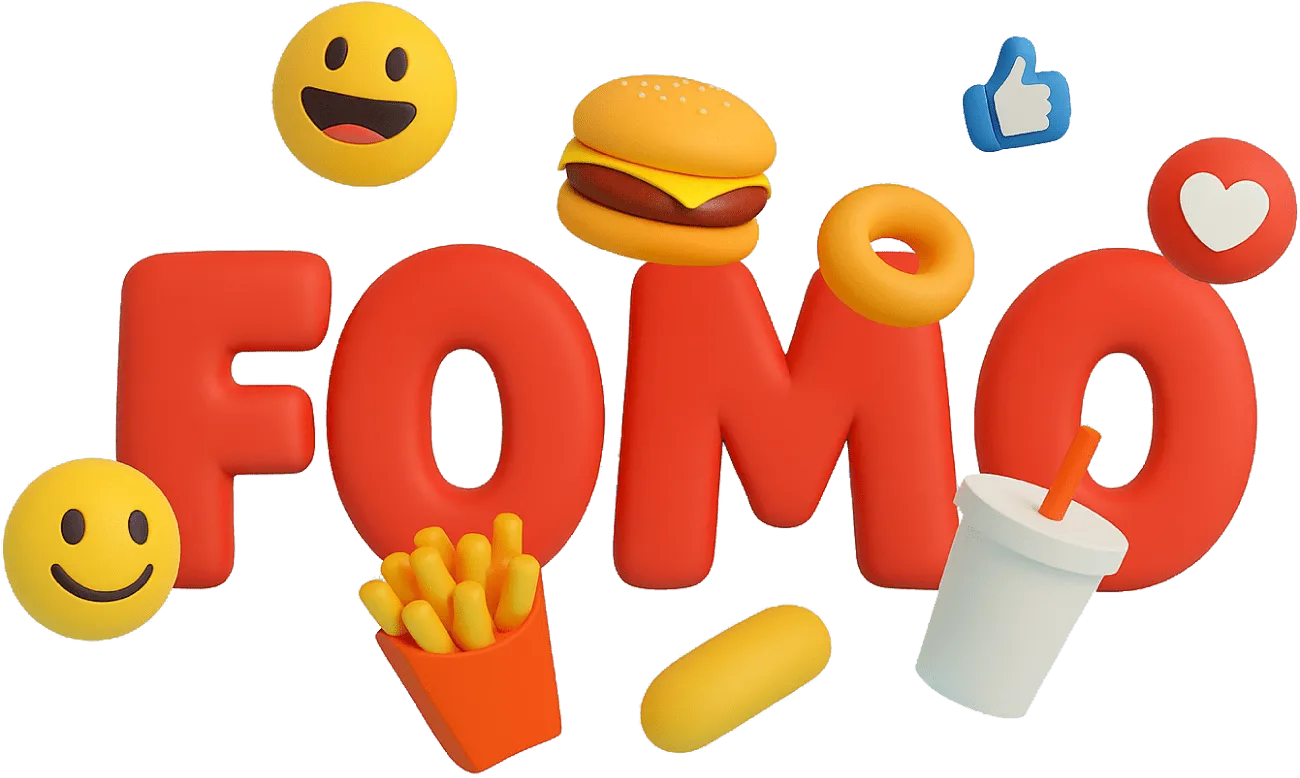
Don’t Sleep on Billboards and Radio. They’re Still Working!
With almost everything being digital, it’s easy to overlook traditional advertising methods like radio ads, transit ads, and billboards. But don’t neglect what’s tried and true! These forms of out-of-home (OOH) advertising are still super effective, especially when it comes to fast food advertising. Billboards, for example, provide visibility in high-traffic areas, capturing the attention of consumers on the go. Radio, meanwhile, allows QSRs to reach a broad audience with localized messaging, making it ideal for promoting limited-time offers or exciting new menu items.
One of the main reasons OOH and traditional ads work so well is their ability to reach customers who may not be actively engaged online. While digital channels are important, OOH ads allow QSR brands to cast a wide net and engage consumers who may not be glued to their phones or active on social media. Additionally, traditional ads are often seen multiple times, creating consistent brand exposure. The real power, however, comes when you integrate digital and traditional advertising. By linking an OOH campaign to a social media initiative or app-based promotion, QSRs can amplify their reach. Try creating a connection between the physical and digital world to drive impact across multiple touchpoints!
The Secret Ingredient? Working with Experts
When it comes to QSR marketing, working with an agency that understands the demands of the industry can make all the difference. Partnering with experts who are familiar with the quick-paced nature of the fast food industry can ensure that your QSR marketing strategy is finely tuned to your business needs. Experienced agencies bring a wealth of insights and a tailored approach that connects with your target audience and drives results.
At UPBrand, we specialize in creating strategies that are both rooted in experience and expertise. We understand the nuances of customer behavior, the importance of brand consistency, and how to craft campaigns that generate buzz and long-term loyalty.
Take our work with Lion’s Choice, for example. Through a strategic rebranding and tailored marketing approach, we helped the restaurant solidify its place in the market. We defined their brand personality and target audience, developing a campaign that resonated with their current audience while reaching new potential customers. This strategy reversed a negative traffic trend and grew the loyalty program considerably in just 6 months. Our level of expertise and focus ensures your QSR’s marketing strategy not only stands out, but drives real business impact.
Ready to make your brand unforgettable? Contact us and let’s get started today!
